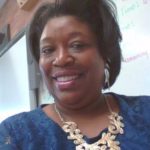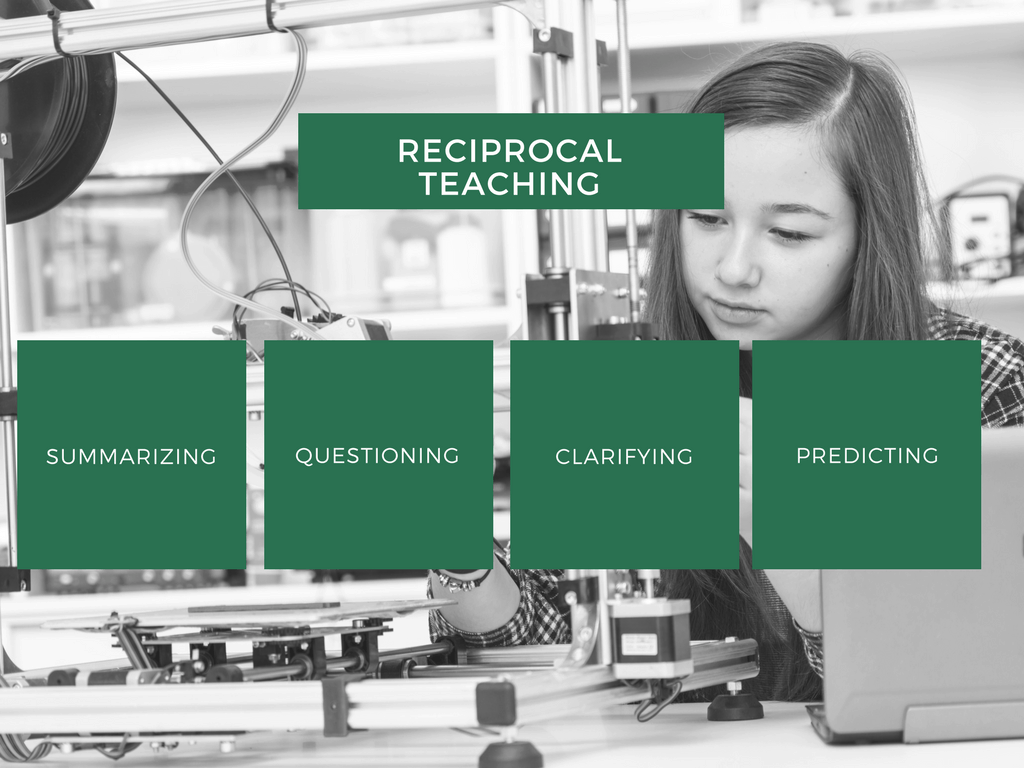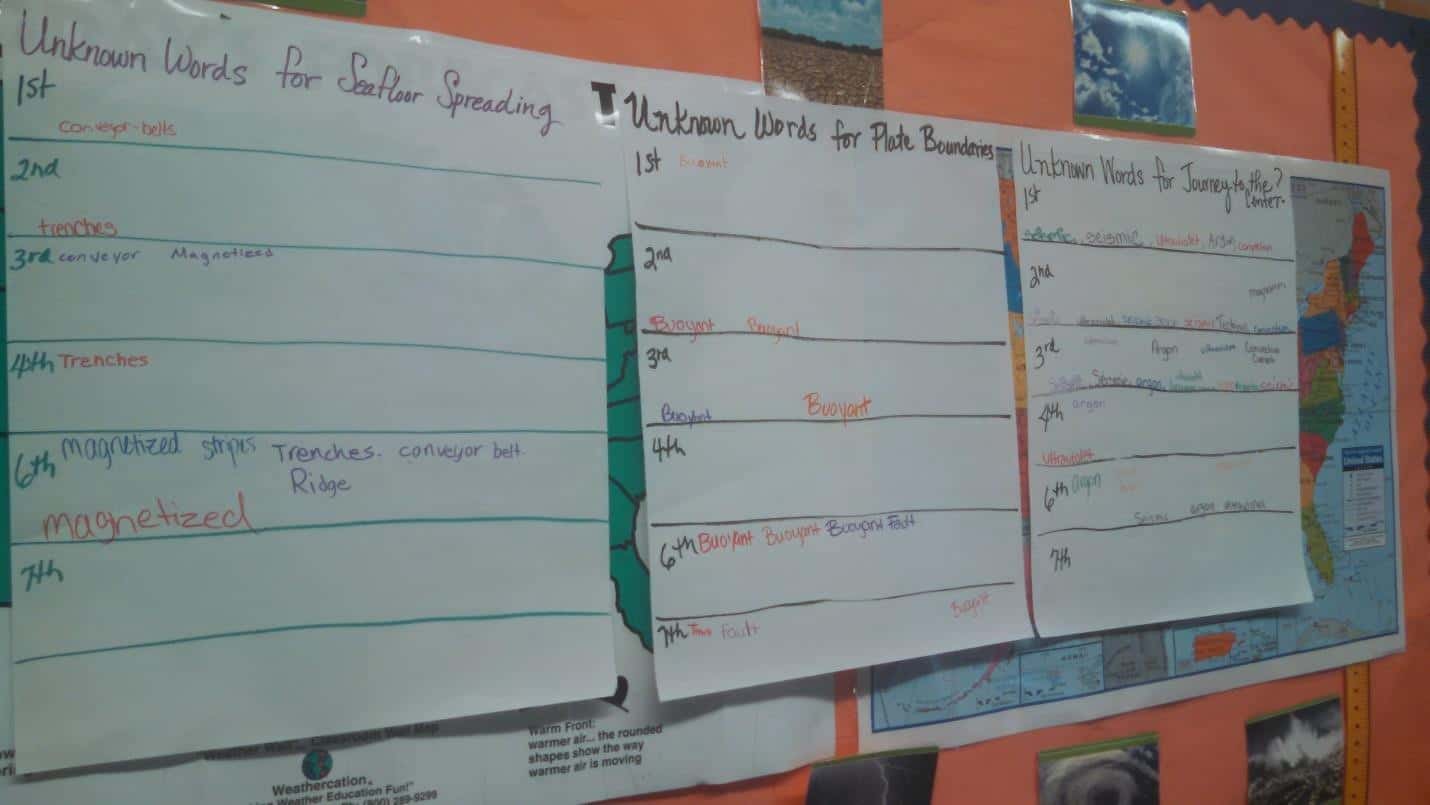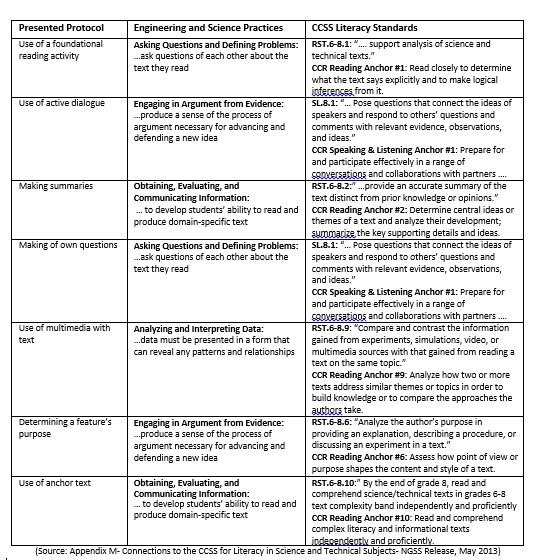Science is a subject dependent upon reading and writing. So even if I do not explicitly teach literacy, it is present in my daily instruction. Grappling with this, I sought the experts—my ELA colleagues. I watched, questioned, and probed their techniques to create my own unique teaching style, and continue to do this today. One of my biggest takeaways was how to identify and use essential literacy elements that promote scientific communication.
The Need for an Anchor Text
My first hurdle to implementation was finding suitable anchor texts. It was so frustrating that many rigorous and relevant texts were above grade level. Specialized vocabulary, scientific background knowledge, and concept load make these above-level texts difficult for student comprehension 1.
How can students ask questions and make inferences if there is no common reference point for analysis? Using an anchor text brings authenticity to scientific content; it provides a point of analysis. When a text is combined with hands-on experiences, it creates a foothold for thinking and problem solving. This foothold generates creativity in which the teacher can stimulate further discourse combining both textual and data evidence. A deeper conceptual understanding is gained through reflection.
Yet, most of my students struggled when reading informational texts. So, I found myself with the following question: “How do I develop an effective scaffolding protocol that will engage my students in interpreting scientific complex texts?”
Use a Foundational Instructional Activity as a Base
A viable foundational reading activity is one that incorporates the thinking skills for comprehension, allows for dialogue, and is reflective in nature. After much research, I decided that Reciprocal Teaching fit the bill perfectly. Reciprocal Teaching utilizes four strategies: clarifying, questioning, predicting, and summarizing.
Students clarify previously unknown vocabulary terms, ask questions about the text’s content, predict what the text will explain, and summarize the text concisely. All of these tasks are completed through careful reading of the text and use of its features, such as bolded words, context clues, etc. I modeled these strategies over a period of four weeks devoting 15 minutes each day using the same text. Chunking the activity into small pieces allowed students to digest the nuances of a given strategy. Though this model of instruction is usually completed by one reader, I created a rotation in which students take turns reading, and the group annotates the text together.
I would add that a foundational instructional activity also lends itself easily to embedding related techniques. Using Reciprocal Teaching, I incorporated other known reading strategies/techniques such as annotation notes, question stems, and close reading/views. For a good example of Reciprocal Teaching in science, watch this video: NYC DOE Presents: MSQI Stories-Reciprocal Teaching: Science.
Create or Choose a Common Graphic Organizer to Monitor Thinking Within Activity
Gauging literacy skills within a discussion is essential to determine progress. When I first looked at my students’ annotation notes, there were no predictions or questions from the given text. I realized that my students required a structural framework to complete the four actions called for by Reciprocal Teaching. Hence, a graphic organizer was created. (A sample graphic organizer can be downloaded at the top of this post.)
Using a sentence stem, students make a prediction about what the text will be about based on keywords within the title. As students read, they summarize the paragraphs and write any unknown words on the class poster. This simple poster addresses specialized vocabulary by allowing real-time examples.
During and after reading, students create questions using Webb’s Depth of Knowledge (DOK) Stems (attached to this blog post). Within the graphic organizer, they reflect whether their posed question is answerable. From these questions we, as a class, determine if they are literal (directly stated), inferential (indirectly stated), or thematic (beyond what is stated).
Frontload Background Information Using Video or Demonstration
Before students read the anchor text, I always introduce a short video or demonstration to build background knowledge. However, the implementation lacked focus at first. When I showed a video, students failed to understand the purpose was to gather information- not just watch.
Working with my ELA colleagues, we discovered that informational text and video utilized the same text connections: text to text, text to self, and text to world. So, we brainstormed about audiovisual cues to simulate connections creating the close view. The technique is modified from the close reading routine in which a text is read multiple times with a different task 2.
In the first view, students concentrate on the visuals using their eyes. As a class, we make connections by brainstorming a list. Students then watch for a second time to write at least three points from the video. In a group discussion, they write down another key point and connect the points to the created list. This strategy allows my students to reflect by concentrating on only one video aspect at a time. The brain is able to incorporate more information which helps my lower-level students to retain key ideas.
Emphasize the Purpose of Features in Informational Texts
Informational texts depend heavily on concept load: the number of ideas within a passage1. Understanding the features helps my classes find relevant information. Thus, students were taught the differences between text and visual features using a think-aloud and were able to reflect on these differences by asking each other reflective questions during the active reading. When students are aware of features to look for, they are better equipped to analyze the author’s purpose.
Welding Scientific Instruction to Literacy
As we look at connections between CCSS literacy and NGSS standards, the focus for 3-dimensional learning will be science and engineering practices. There are several areas in which the presented protocol overlaps with literacy.
A Final Note
As scientific instruction is evolving based on new standards, it is an exciting yet perplexing time for us educators. The paradigm shift requires learning opportunities that entwine scientific and/or engineering practices, cross-cutting concepts, and disciplinary core ideas. We are clamoring to fill an instructional void because it is uncharted territory. One thing is consistent: obtaining scientific knowledge is dependent upon literacy.
References
- Fisher, D., Frey, N., & Lapp, D. (2012). Teaching students to read like detectives: comprehending, analyzing, and discussing text. Bloomington, IN: Solution Tree
- Frey, N., Fisher, D., & Pearson, P. D. (2013). Rigorous reading: 5 access points for comprehending complex texts. Thousand Oaks: Corwin





















